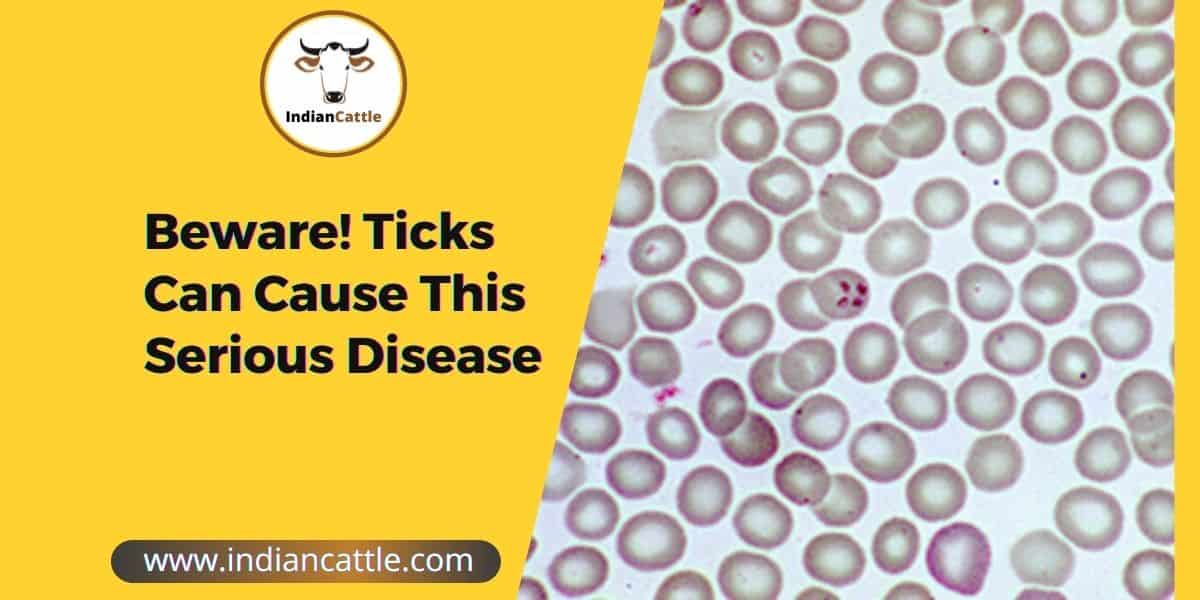
Diagnosis and Treatment of Babesiosis in Cattle
Babesiosis or Tick Fever is a tick-borne disease commonly encountered in livestock and is cause of severe production and financial losses. The occurrence of the disease is linked to tick population which varies with season especially in summer months. The disease is caused by protozoan parasites Babesia, which goes through a development life cycle in ticks. When the tick feeds on the animal the parasites, which are present in the salivary gland of the infected ticks, are transmitted into blood. The parasites multiply in lymphoid tissues and infect erythrocytes.
The disease is also considered zoonotic. Although the infection in human is dormant, but flares up after splenectomy or when the cellular immunity is compromised.
Etiology: A number of species of Babesia have been reported in diverse livestock.
- Cattle – Babesia bigemina, Babesia bovis, Babesia divergens
- Sheep and Goats – Babesia ovis, Babesia motasi
- Horse – Babesia equi, Babesia caballi
- Cat – Babesia felis
Intermediate Ticks: Boophyllus Spp. Rhipicephalus Spp. Stage to stage transmission.
Animals affected: Cattle, Buffalo, Sheep, Goat, Dog, Horse and Cat.
Epidemiology: B. bovis and B. bigemina can also be transmitted in ticks from one generation to next via eggs.
Clinical Symptoms: Pyrexia, anorexia, depression, constipation, emaciation, weakness, muscle tremor, reluctant to move, anaemia, ascites, icterus, neurological signs, such as, incoordination, teeth grinding and mania have also been recorded. When intra erythrocyte infection is severe it leads to haemoglobinuria (coffee coloured urine) and death.
Specimen For Laboratory examination: Blood, Urine
Clinical Pathalogy: Urine is coffee coloured, due to presence of haemoglobin, positive for protein and blood. Blood smear would show banana-like parasites in the erythrocytes present in pairs.
Post martem Lesions: Emaciation , Icterus , sero-sanguinous fluid in pericardial sac, and peritoneal cavity , petechial haemorrhages, and ecchymosis in the endocardium and gastrointestinal mucosa ,Oedema of lungs , Splenomegaly with dark, red and soft pulp is a very typical finding. Hepatomegaly with fatty changes to necrotic foci, gall bladder is distended with thick granular yellowish bile, Kidney dark red, Urinary bladder contains red coloured urine.
Laboratory Tests: Blood Smear examination, Complement Fixation Test, Indirect fluorescent antibody test, ELISA, Gel precipitation Test and Passive Haemagglutination Test
Diagnosis: The parasites can be seen in thin smear of blood , brain, liver and spleen from recently dead animal or smear from peripheral capillary circulation such as tip of the tail or ear of ailing animal. The smear fixed with methanol, stained with Giemsa, in microscopic examination the parasites observed. During primary infections, parasites are relatively abundant for up to 10 days and 20 days in the blood of cattle infected with Babesiosis. Thereafter, parasitism persists at low levels for variable periods.
Differential Diagnosis: Differential diagnosis includes anaplasmosis, trypanosomiasis, theileriosis, bacillary haemoglobinuria, leptospirosis, eperythrozoonosis, rapeseed poisoning and chronic copper poisoning. Rabies and other encephalitides may also considerations in cattle with central nervous system signs.
Treatment and Control: Inj . Berinil 5-10ml.\100 kg. body wt. Injection Imidocarb 12% solution @ 1 ml per 100 kg or 1.2 mg per kg body weight to be given s/c. At dose rate 3 mg per kg body weight, it provides preventive protection for 4 weeks.
Control of ticks: Control of ticks by disinfection of sheds within cracks, crevices and holes is a critical step. Tick control by acaracide dipping is widely used. Use of fire gun on cracks, crevices, is a useful tool in eliminating ticks and eggs. Filling the cracks on the floor and the barn walls would eliminate tick breeding. Another option is to allow poultry birds (Desi) in the barn who would feed on ticks.
Chemical Control: External application of Malathion on the body as 1% or 0.5% concentration, respectively at the monthly intervals. Organophosphorus compounds like, carbamates, pyrethroids and amidines insecticides can also be used.
You may like to read: Flies in the Farm? Your Cows May Have This Disease
| Dr. V. M. Bhuktar
Former I/c Joint Commissioner A. H. Western Regional Disease Diagnostic Laboratory (WRDDL) Pune M.S |
Dr. K. R. Shingal
B.V.Sc. & A.H., M.V.Sc., N.D.B.P |
